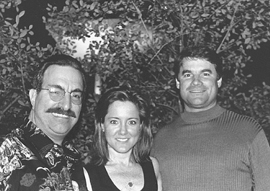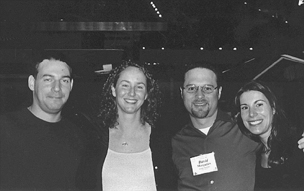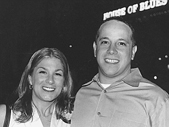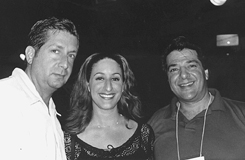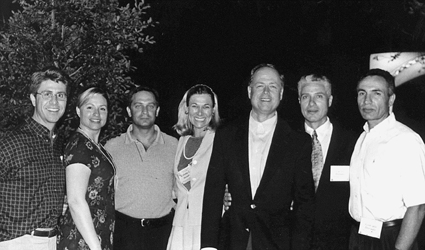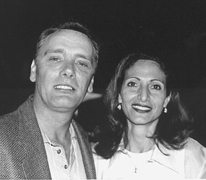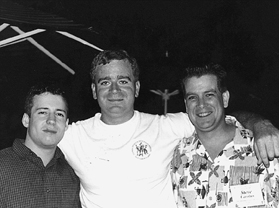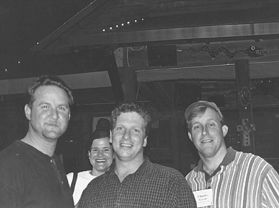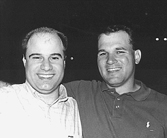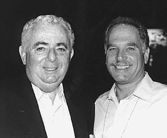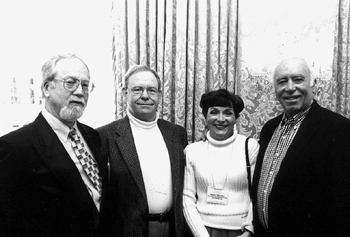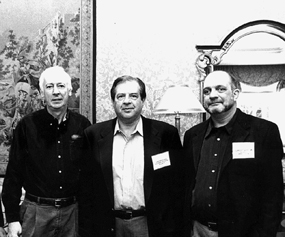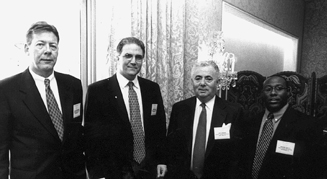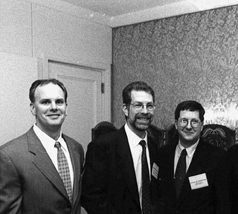I like the fast pace of trading and the cama raderie on my desk and between the buy-side and sell-side traders," said Ryan Smith, a buy-side trader at Friess Associates. Smith, 30, is one of seven traders at the Greenville, Del.-based firm, which was established in 1974 by the husband and wife team of Foster and Lynn Friess.
Smith, who was born and raised in East Liverpool, Ohio, graduated from Bucknell University in Lewisburg, Pa. He started his Wall Street career in 1992 at Lehman Brothers on the syndicate desk. Two years later, he was working as a buy-side trader at Alliance Capital Management, where he traded over-the-counter stocks and derivatives.
Friess has $9 billion in assets and trades exclusively in U.S. equities, over-the-counter and listed stocks included, for several institutions, such as the University of Delaware and the Templeton Foundation. Its clients also consist of various Fortune 500 pension funds.
Over the past ten years Friess Associates has grown exponentially. In 1990, the firm's trading desk consisted of just two traders. Today, a trading team of 10 implements decisions for seven research teams staffed by 30-plus investment professionals in Wilmington, Delaware; Jackson, Wyoming; and Phoenix, Arizona. The firm's trading desk handles about 50 to 125 orders each day.
Besides managing the holdings for institutions and pension funds, Friess runs its own fund, the Brandywine Fund, which was up 53.5 percent last year. Forbes magazine recently cited Brandywine as among a dozen funds that posted superior returns over the past 10 years – 20 percent annualized – without mimicking the S&P 500.
Analysts Abound
Friess said it capitalizes on the historic relationship between earnings performance and stock prices by isolating rapidly growing companies that sell at reasonable multiples of forward earnings. "Intensive contact with company managements, their competitors, customers and suppliers help determine which companies fit the earnings-growth and price criteria and are most likely to exceed Wall Street earnings expectations," Friess noted.
Unlike most buy-side firms, Friess does not have portfolio managers. Instead, it has analysts who are charged with managing the firm's assets. Smith said the 15 analysts at his firm send their orders to the trading desk in the same way it is done at most other firms. Said Smith, "If an analyst wants to buy five million shares of Intel, he'll call and give me the basic parameters – I'd like to buy it all over the next two days or I'm in no hurry." The buying time frame depends on what news is coming out and on fundamental analysis.
Smith is a buy-side trader who likes to get the job done – quickly and efficiently. "I'm not the type who likes to buy 5,000 shares here and 2,000 shares there over the course of a month," he explained. "I like to get things done as soon as possible at the best price and in the most efficient manner."
In recent times, buy- and sell-side traders have had to deal with increasing stock price volatility. "It absolutely affects your trading," Smith said. "You have to pay attention to the stocks that you are working and pay attention to your orders. You have to work much more closely with the brokers. You must give them much better instructions when working an order than you did a few years ago."
Hurting Liquidity
Smith predicted that volatility might get worse before it gets better. "I think the proliferation of the ECNs has hurt liquidity," he said. "The fragmentation of the marketplace is clearly frustrating a lot of traders. It is certainly frustrating me."
Within the next few years, Smith foresees the marketplace becoming more stable and volatility having less of an impact on the trading day. "I think maybe over the next six months there will be more and more ECNs coming to the marketplace," he said. "However, a couple of years down the road, some of them will fall by the wayside. And you will end up with two or three winners and a number of losers."
Smith is married and the father of two young children – a two-year-old daughter, Jordan, and a one-year-old boy, Chase.
While in college, Smith played strong safety on Bucknell's Varsity football team. Today, he is an avid football fan and enjoys the game from the sidelines. In his spare time he reads sports magazines and football scouting reports. Smith is a die-hard Pittsburgh Steelers fan.





